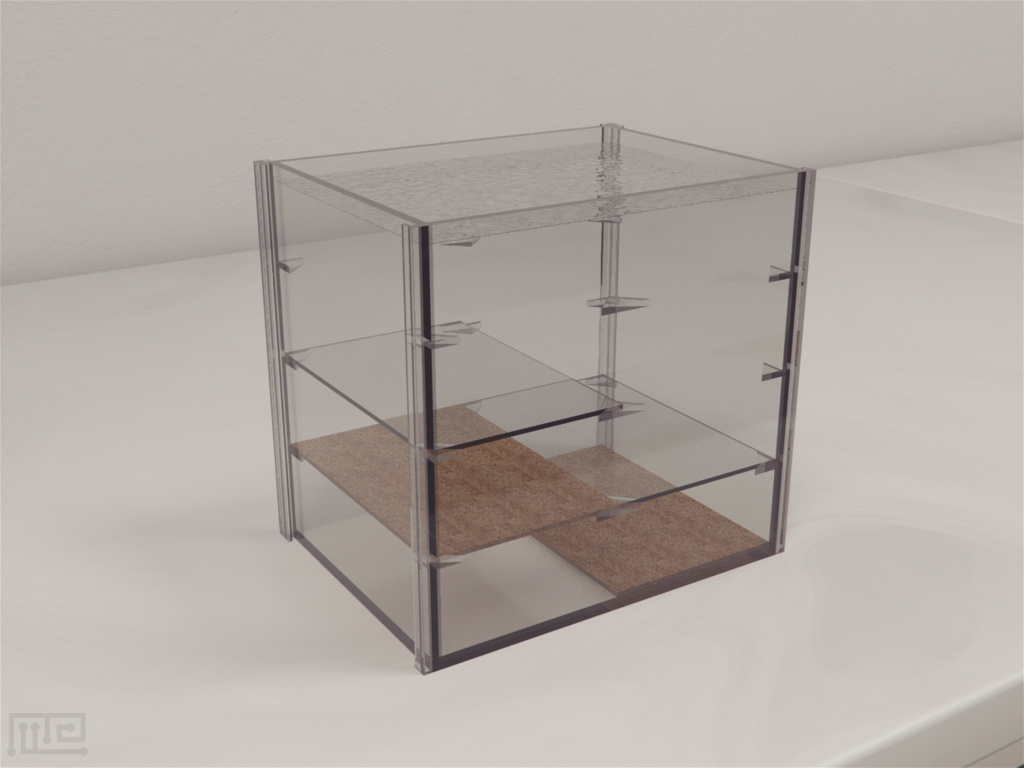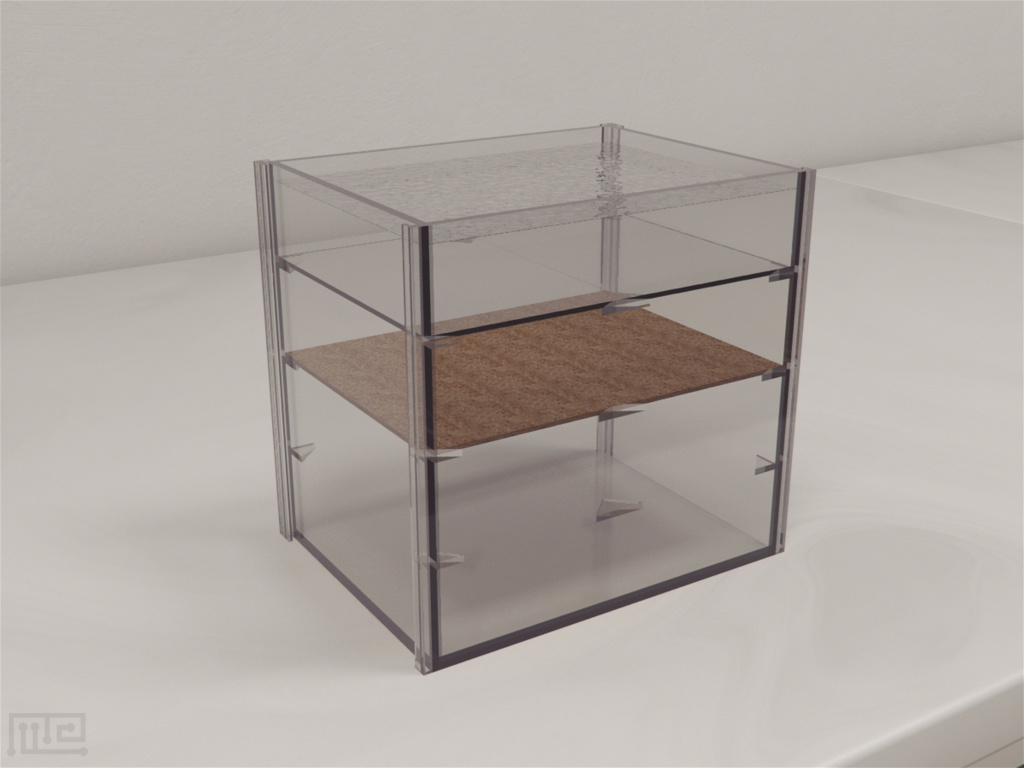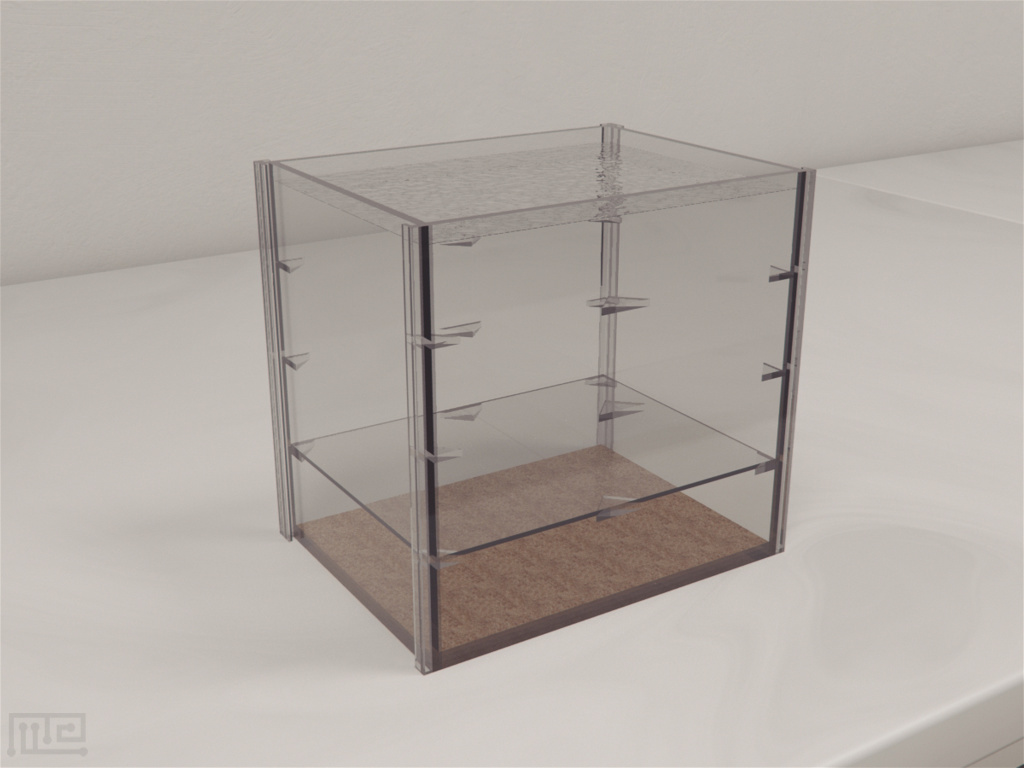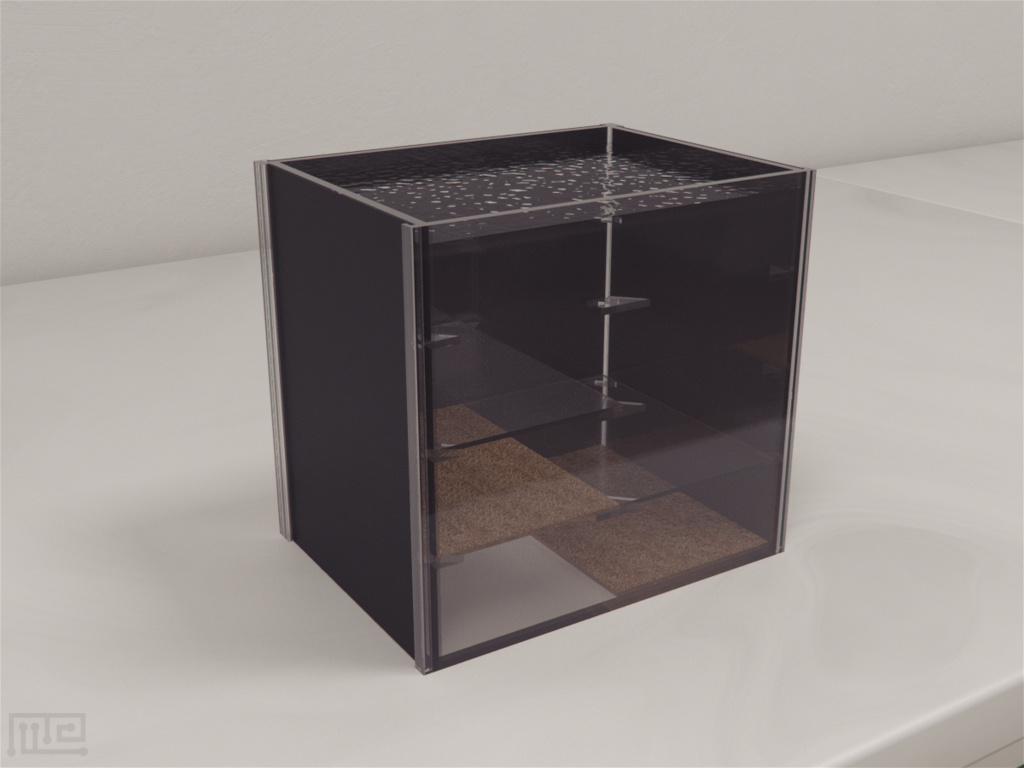Description
The Black white preference tank assesses for wall color stimuli on diving, and the effects of depth stimuli on scototaxis. The Black White preference tank from MazeEngineers allows for three separate configurations
- The split-depth tank configuration is composed of one side of the tank that is set to a depth of 10cm using a partition while the other side is set to a depth of 15cm.
- In the shallow configuration, both sides can be set to a depth of 5cm.
- In the deep configuration, both sides of the tank can be set to 15cm.
- Gravel substrate is placed on a floor 5 cm below the plexiglas partition on each side.
- The sides of the tank are either left uncovered (transparent), covered in black paper (black), covered in white paper (white), or covered in black on one side, and white on the other.
Price & Dimensions
Zebrafish
$ 1590
+SH- Tank: 20×15×20 cm (length×width×depth),
Documentation
Introduction
Zebrafish Black White Preference is a behavioral measure of Zebrafish’s fear and anxiety. It consists of a rectangular aquarium adaptable to several configurations and is used to evaluate the effect of tank depth on color preference and tank color on depth preference.
Zebrafish is a model species to gauge human anxiety. Mounting evidence suggests its suitability as a quintessential model in neurobehavioral research. Over the years, Zebrafish studies have gained tremendous popularity in biomedical research because of score reliability and resource-efficient approaches. Pre-clinical research conducted in Zebrafish model uncovers the basis of anxiety-related neuropathologies and helps to develop novel pharmaceutical interventions. Anxiety represents a serious burden on individuals and society. However, the behaviors accounting for Zebrafish anxiety are unclear. A fundamental belief is that the prime indicator of fear is stimulus avoidance.
Rachel and Denis (2012) designed the Zebrafish Black White Preference paradigm to determine the behaviors in the presence of an avoided stimulus. Subjects are confined to a white, black and transparent tank, and their behaviors scored.
Apparatus and Equipment
The apparatus consists of a rectangular split-depth tank with dimensions 20 cm x 15 cm x 20 cm. In split configuration, a plexiglass partition sets one side of the tank to the depth of 10 cm and the other to 15 cm. In shallow and deep configurations, both sides are set at a depth of 5 cm and 15 cm respectively.
Depending upon the test trial, the sides of the tank are either covered with a black or white paper or left uncovered (transparent).
The whole apparatus is lit from the above in the range of 400 lux (for black condition) to 600 lux (for transparent condition).
Training Protocol
House the fish in the housing rack ensuring an effective filtration system and oxygen supply at all times. Feed once to twice a day. Maintain water temperature to 25ºC and the room light/dark cycle to 14/10. Fix a video camera (Noldus Etho Vision® XT) approximately 1 m above the tank to monitor location, activity, and swim-pattern of fish.
Depth and Color Preference Analysis in Split-Depth Tank
Divide subjects into five groups of 11-13 fish. Test three groups for Depth Preference (DP) by confining to tanks covered in white, black and transparent papers. Test remaining two groups for Color Preference (CP) by confining to a single-depth black/white container with depth set to 5 cm (shallow) or 15 cm (deep). Gently net fish from their home tank into the experimental tank and observe each subject for 15 minutes.
Assessment of Behavioral Measures of Zebrafish in Black White Preference Tank
Rachel and Denis (2012) raised 59 adult wild-type fish in the laboratory and subjected each fish to several test configurations in the split-depth tank. Manipulations of color stimuli had a significant effect on depth preference; fish in the transparent tank exhibited the strongest preference for the deeper side while fish in the black tank showed the weakest preference. Compared to animals in black tanks, those in the transparent tank exhibited more immobility and less frequent shuttling. Of all the color manipulations, the black color induced least and transparent the highest anxiety in the fish. In all groups, Zebrafish spent more time in the top portion of the tank, and when given a choice between black and white sides, the fish preferred the black side of the tank.
Conversely, manipulations of depth stimuli had little effect on color preference. Fish showed a marked avoidance of white irrespective of confinement in deep or shallow conditions.
Data Analysis
Primary measures noted in depth-preference and color preference are:
- Duration in Shallow: The duration (in seconds) the fish spends on the shallow side of the tank during the 1-minute interval
- Duration in White: The duration (in seconds) the fish spends on the white side of the tank during the 1-minute interval
- Distance from Walls: Average distance of the fish from the nearest outer wall
- Shuttling: Total number of center-crosses per minute
- Path Length: Total swim path length of each fish during the 1-minute interval
- Immobility: Movement rate of <1cm/sec
Strengths & Limitations
Strengths
Split-depth tank is a potentially useful model to assess anxiety-related states in zebrafish. The tool helps to analyze the neural circuit, genes, and molecular pathways underlying neurobehavioral processes. The various configurations of the apparatus allow experimentation and novelty with approaches to model anxiety in the fish. The paradigm complements traditional rodent models of anxiety and provides a conceptual framework for future research into biological psychiatry.
Another benefit of the paradigm is the ability to assess myriad of behavioral measures in a combinational assay. The black/white stimuli exert “causal” influence on anxiety, but the exposure can be forced to instigate and study other measures of anxiety such as immobility and diving.
Additionally, the apparatus is animal-friendly and provides filtration at all times. The protocol does not require huddling or suffocating of the animal in a tiny aquarium. Neither does the design demand excessive or tough training. The fishes are not exposed to stress or undue fear to affect their natural behavior.
Limitations
The most glaring limitation of Zebrafish Black White Preference tool is perhaps its limited laboratory investigation. The paradigm has been tested for just one strain of Zebrafish– AB. Different populations of Zebrafish are known to differ in terms of exploratory behavior (Egan et al. 2009; Sackerman et al. 2010). Developing a single apparatus studying all the behavioral aspects of different fish strains will increase its reliability and efficiency.
Currently, the apparatus design is insufficient to study, interpret and predict the effects of genetic or pharmacological manipulations. Continued experimentation and iteration of design will improve efficiency and provide predictive validity to the setup.
Summary
- Zebrafish Black White Preference is a behavioral test to measure anxiety in zebrafish.
- Zebrafish is a behavioral model of human anxiety.
- The apparatus consists of a rectangular aquarium that can be adapted to several test conditions.
- For depth preference, the tank is covered with black, white or transparent papers.
- For color preference, the test is carried out in two configurations; deep and shallow water.
- Zebrafish prefer black over white and transparent and deep water over shallow water.
- The split-depth tank is designed by Rachel and Denis (2012).
References
- Rachel E. Blaser, R.E., & Rosemberg, D.B. (2012). Measures of Anxiety in Zebrafish (Danio rerio): Dissociation of Black/White Preference and Novel Tank Test. PLoS One, 7(5), e36931. http://dx.doi.org/10.1371/journal.pone.0036931
- Bergner, C.L., Cachat, J.M., Canavello, P.R., Egan, R.J., Elegante, M.F., Hart, P.C.,… Kalueff, A.V. (2009). Understanding behavioral and physiological phenotypes of stress and anxiety in zebrafish. Behav Brain Res, 205(1),38-44. http://dx.doi.org/10.1016/j.bbr.2009.06.022
- Cunningham, C.S., Donegan, J.J., Gould, G.G., Lawless, K., Long, A., Sackerman, J.,… Nguyen, N.N. (2010). Zebrafish Behavior in Novel Environments: Effects of Acute Exposure to Anxiolytic Compounds and Choice of Danio rerio Line. Int J Comp Psychol, 23(1), 43-61.
Request a quote
"*" indicates required fields





